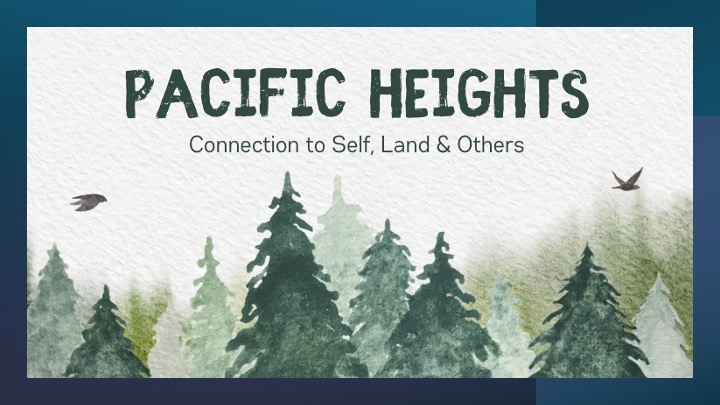Pacific Heights Elementary 24-25
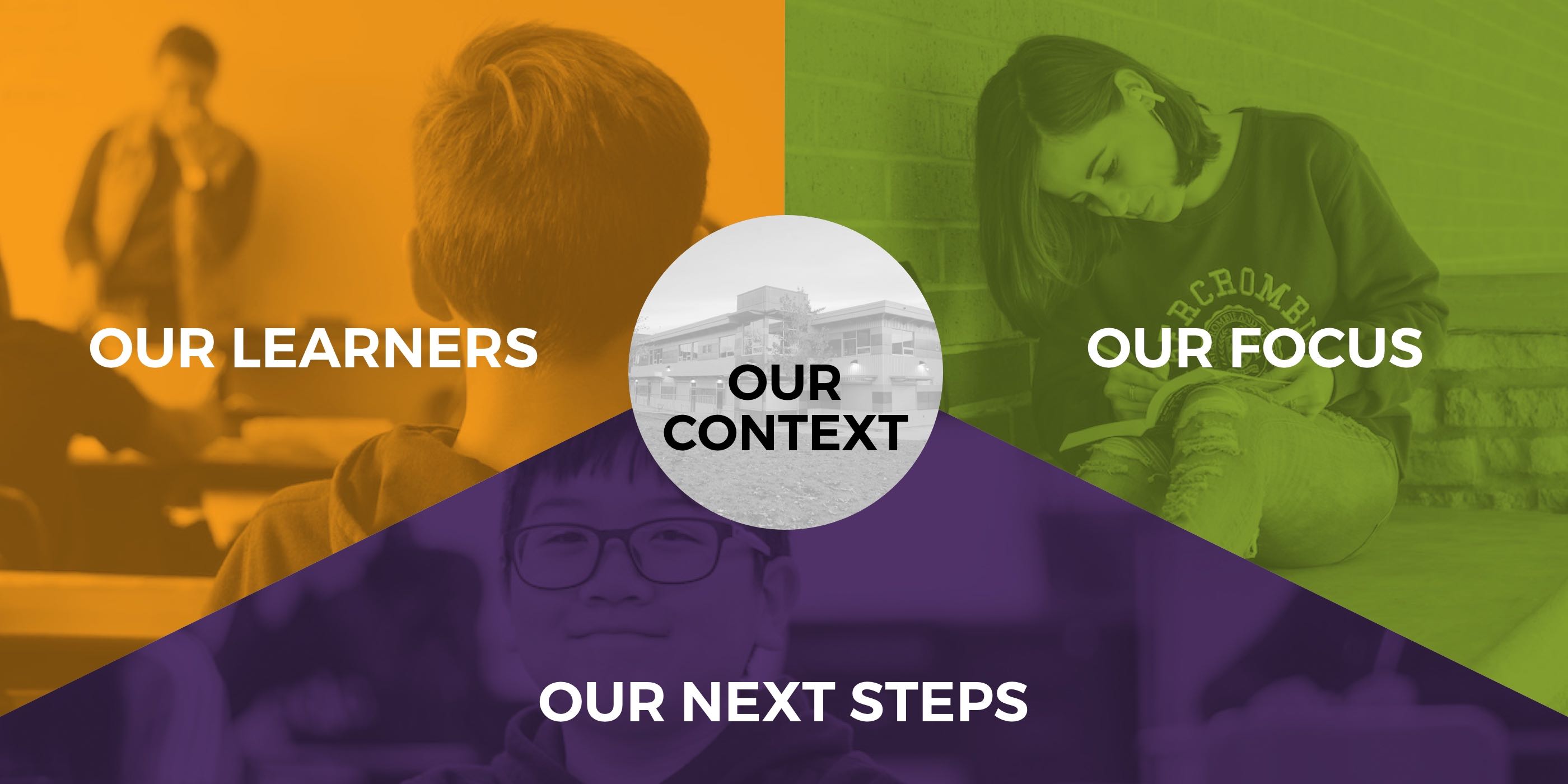

OUR LEARNERS
At Pacific Heights Elementary, Social and Emotional Learning (SEL) is at the heart of our commitment to student growth. SEL empowers learners with the skills they need to thrive academically, personally, and professionally: nurturing self-awareness, empathy, and responsible decision-making as the foundation for lifelong success.
Our student community is richly diverse, including newcomers to Canada as well as participants in our French Immersion and Neighbourhood programs. To meet their varied needs, we embrace a curriculum grounded in balanced literacy and the Science of Reading. By implementing evidence-based reading strategies, we ensure a comprehensive, inclusive approach to literacy that supports every learner.
Mindfulness practices are woven into our school culture to promote emotional well-being and self-regulation. Students also explore the social, ethical, and environmental dimensions of their local and global communities, deepening their learning and sense of responsibility.
Our educational approach is also deeply informed by the First Peoples Principles of Learning, which emphasize the interconnectedness of learning with personal well-being, community, and the natural world. These principles remind us that learning is holistic, experiential, and grounded in relationships, identity, and culture. By incorporating these values into our classrooms and school community, we foster a respectful, inclusive environment where students can develop a strong sense of self and a deeper appreciation for the land and the diverse stories it holds.
We encourage curiosity, humility, and openness to diverse perspectives, helping students connect meaningfully with the unique diversity of our school. This inclusive mindset fosters empathy, belonging, and mutual respect across all interactions.
By cultivating a safe, supportive environment where emotional well-being is prioritized, students are empowered to engage deeply with their learning. Our integration of balanced literacy and the Science of Reading strengthens this approach equipping students with the tools they need to become confident, capable, and compassionate individuals.
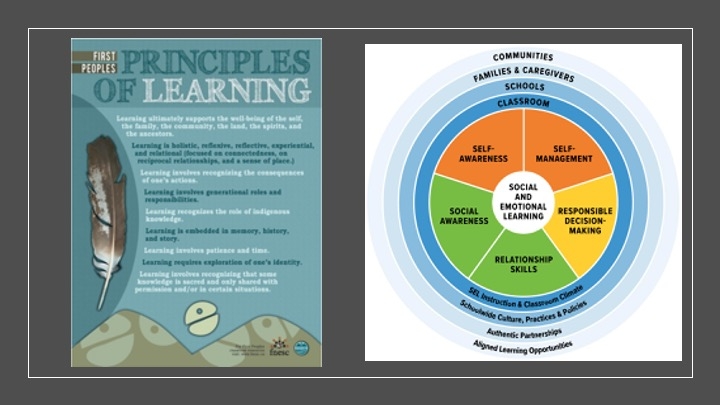
OUR FOCUS
A central part of this work is the implementation of the UFLI program which provides a carefully sequenced and structured approach to teaching essential reading skills, including phonemic awareness, phonics, decoding, and encoding. Lessons are designed to be direct, engaging, and consistent. Allowing students to build a strong foundation with clear routines and multisensory learning strategies.
UFLI supports all learners, including those who are neurodiverse, multilingual, or require additional support. The program’s design makes it accessible and effective across a wide range of learning profiles. Teachers are seeing students grow in confidence, accuracy, and independence in both reading and writing.
Learning Support teachers are aligning their interventions with classroom instruction to ensure consistency and continuity. Teams are actively using current student data to refine their teaching practices and provide responsive support.
Through this focused, research-based approach, we are committed to building strong, capable readers who are prepared for future academic success. The implementation of UFLI, combined with data-informed teaching and targeted support, ensures that our students receive the tools and instruction they need to thrive in their literacy journey.
Below are examples of our students' classroom experience as they relate to the curricular competency of comprehending and connecting (reading, listening, viewing).
(Curricular Competency: English Language Arts)
I can make meaning of text by using foundational concepts of print, oral, and visual texts. (Concepts include directionality of print, difference between letter and word, difference between writing and drawing, spacing, letter-sound relationship, understanding that pictures convey meaning, taking turns, expressing ideas and needs, role-playing, and phonological awareness).
Sample: In the following examples, students are practicing phoneme segmentation and blending using the sound box strategy to build and decode CVC words. (Blending and segmenting CVC (consonant-vowel-consonant) words (e.g., cat, dog, hat).
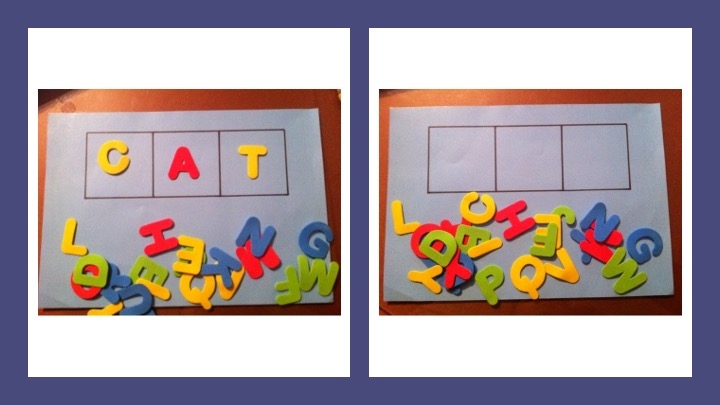
This sample represents 80% of our primary cohort who are now proficient/exceeding in their ability to make meaning of text by using foundational concepts of print (Curricular Competency: English Language Arts). In January, 60 % of our students were proficient and/or exceeding. In June, 80% of our students were proficient and/or exceeding.
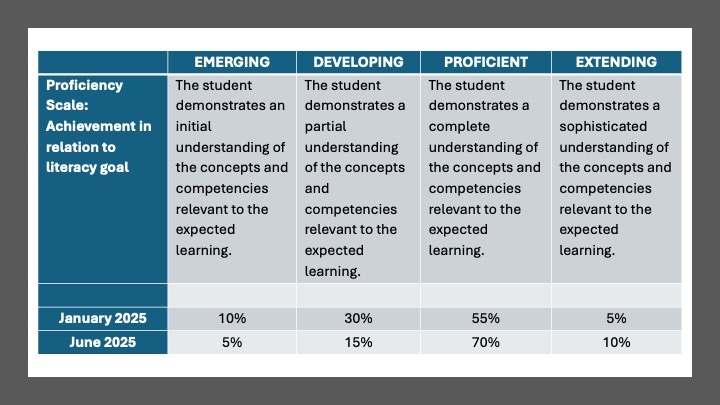
OUR NEXT STEPS
Next Steps in Strengthening Literacy Instruction at Pacific Heights Elementary
As we continue to deepen our focus on early literacy, our next steps will further align instruction and assessment with the principles and key components of a balanced literacy program.
Moving forward, we will:
- Strengthen our implementation of Science of Reading practices in primary classrooms, while continuing to incorporate balanced literacy strategies to support comprehension, engagement, and language development.
- Monitor student progress more closely during key transition points, particularly for students receiving Learning Support, English Language Learners (ELL), and those new to Grades 1–7. Our goal is to ensure all learners have a strong, evidence-based foundation in reading.
- Introduce a phonemic awareness assessment tool as part of our classroom-based assessment practices. This will enhance our ability to identify student strengths and areas for growth in the earliest stages of reading development.
- Use classroom assessments aligned with Science of Reading principles, including decoding, encoding, fluency, and comprehension measures, to provide a full picture of student literacy development.
By combining structured assessment tools, inclusive instructional strategies, and a strong understanding of how students learn to read, we are building a comprehensive literacy framework. These next steps will help ensure that every student at Pacific Heights Elementary receives the support they need to thrive as confident, capable readers.
